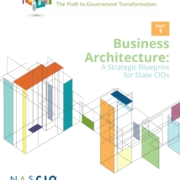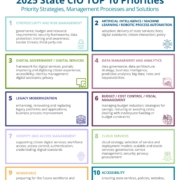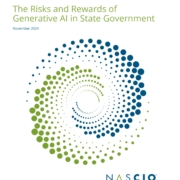Enterprise Architecture: A Guide to State Government Continual Transformation
In this second in our series on enterprise architecture we make the case for enterprise architecture as a necessary discipline for planning and organizing continual transformation. Transformation should be a continual activity. However, there are times when change management is tied to an event such as the change in administration. Governors won’t run on an enterprise architecture platform. They will run on a platform promising to address current and anticipated issues important to citizens. We make the case that whatever platform is being prescribed, whatever the intended outcomes are, as well as the pursuit of continual transformation, the activities, business and technology capabilities must be organized and orchestrated effectively to achieve that prescribed change. The discipline of enterprise architecture is a strategic enabling discipline for achieving that orchestration.














